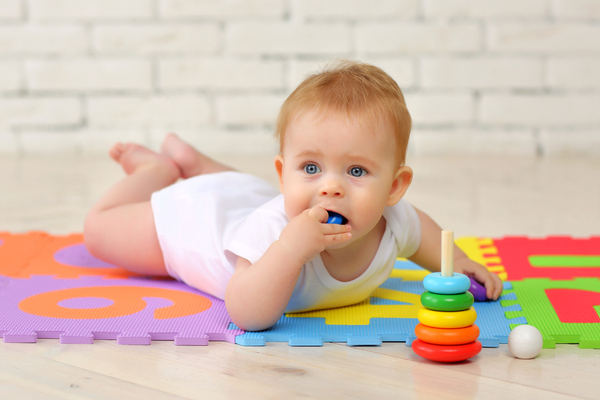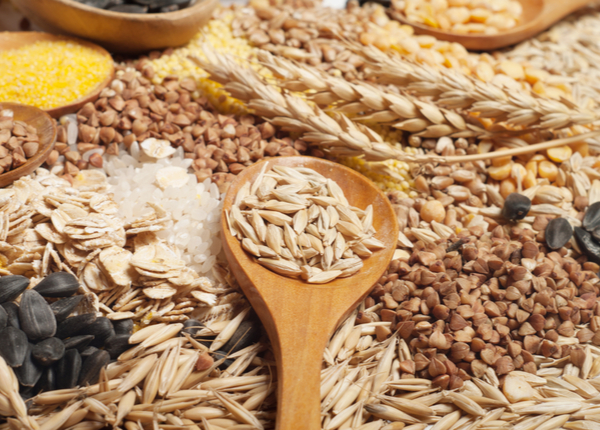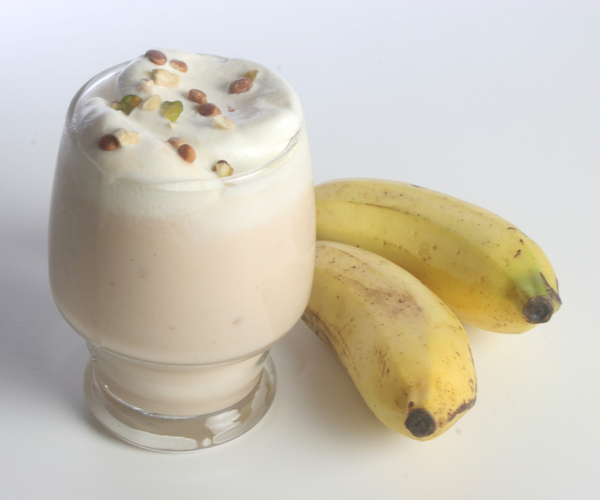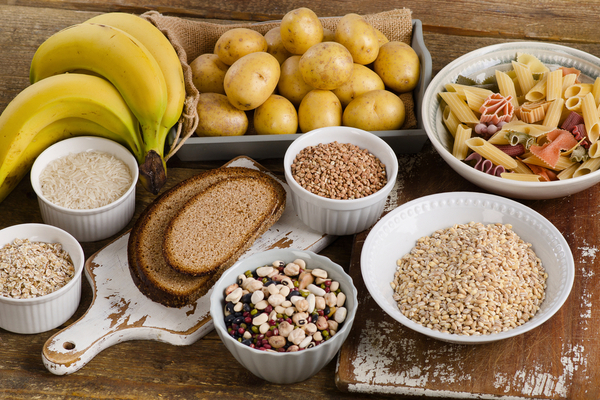INFANT AND BABY

When it comes to the human body, the gut is a truly fascinating organ. Think of your gut like an engine, working around the clock to keep your tummy healthy and happy.
While your baby is starting to smile, learning to crawl and taking their first steps, their gut is also hard at work developing their gut microbiota that will set them up for a lifetime of good gut health.
There is no doubt that as a parent you want to give your baby the best start in life. And by introducing vitamins, proteins and lots of helpings of tummy-friendly goodness you will set them on the path to good gut health.
Every stage of your baby’s journey with food is an opportunity to lay the foundation of good gut health. From their first solids as you introduce a diverse diet packed with dietary fibre, you will ensure that their tummy stays happy and healthy for longer… and help prevent any allergies from surfacing.

Introducing solid foods
As parents, we are under a lot of pressure. From society and well-meaning strangers to in-laws and even your own voice in your heads, the list goes on. We lie in bed at night worrying if we are making the best choices to keep our precious babies’ healthy and safe.
But learning to introduce solid foods to your baby doesn’t need to be complicated. Many parents enjoy the opportunity to bond with their baby. And learning which solid foods to feed your baby can be fun!
If you are breastfeeding, you are passing rich nutrients and immune-boosting substances onto your baby. But your baby’s source of nutrients goes far beyond breastmilk. As your baby grows over the years, their gut passes through three distinct phases:
1. A development phase which occurs from three to fourteen months
2. A transitional phase which occurs from fifteen to 30 months
3. A stable phase which occurs from 31 months onwards.
As parents, you have an exciting opportunity. The nutritional choices you make in your baby’s first years of life will help to shape their tummy health and immunity… and make a real difference to their overall health.
Why is six months old the ideal time for solid foods?
At six months old, your baby is getting stronger – and messier! This age is a big step in your baby’s development. Your baby now knows how to hold their head up straight, swallow their food safely and stop their tongue thrust reflex. How quickly did that time go?!
Around six months of age, your baby will start to crave more than breastmilk or formula. As you introduce your baby to an array of tasty solid foods, their tummy begins to work through the crucial development phase. Their gut microbiota evolves from a simple environment that digests only breastmilk or formula to an environment that can digest richer, more varied foods.
Iron stores laid down in the baby’s body during pregnancy are depleted. Since human milk is quite low in iron, your baby needs to consume either an iron-fortified infant formula or a diet of iron-rich foods such as:
- Meats
- Dried peas
- Beans and legumes
- Tofu
- Eggs
- Leafy vegetables.
It’s also an ideal time to introduce to your baby vitamin D-fortified milk, yoghurt and cereals. Vitamin D is essential for building bone strength and for the proper maturing of gut microbiota.
It’s an exciting time for your family to share the wonderful world of food with your baby. But while it might be tempting to jump in and feed your baby solid foods earlier than six months, your baby’s tummy isn’t mature enough to handle it. Before four months of age, your baby’s pancreatic function, small bowel absorption and fermentation ability are underdeveloped.
It is only at six months of age that your baby’s pancreas will secrete enough enzymes to digest the starches and proteins of solid foods.

The benefits of a diverse diet
Every stage of your baby’s journey with food is an opportunity to lay the foundation of good gut health. That’s why it’s so important to feed your baby a diverse diet. A diverse diet leads to a healthier and happier tummy.
Nutrition is absolutely critical to help regulate the gut microbiota throughout your child’s life. In fact, research has shown that eating from many different food groups in the first year of life may reduce the risk of asthma, food allergy and food sensitisation.
Between six and twelve months is the best time to add food variety. But with hundreds of choices out there, it can be difficult to decide what kind of foods you should feed your baby. And you are not alone in your confusion.
We recommend offering your baby the five main diverse groups of food. Each of these food groups offer plenty of nutrition, proteins and tummy goodness.
- Vegetables and legumes
- Fruits
- Grains and cereals
- High-protein foods (meat, fish, tofu, poultry, eggs)
- Dairy (milk, cheese and yoghurt).
Tips for encouraging your baby to eat a diverse range of foods
Trying new foods can be a fun experience for your baby. Your baby is exploring new textures and tastes – and it can be a messy endeavour! But as parents, you can help introduce the right foods that are appropriate for your baby’s developmental age.
Eating motor skills are important for your child’s stages of development. That’s why it’s vital to change the texture of foods between six and twelve months of age. This will help refine your child’s eating motor skills.
The table below shows the different textures of food appropriate for your baby during their first year of life:
| Age | Texture of food | Examples |
| 6 – 7 months | Blended or pureed | Pureed steamed carrot |
| 7 – 9 months | Mashed or grated foods, soft lumps and soft finger foods | Mashed pear |
| 9 – 12 months | Food with lumps that need munching, chopped foods, finger foods, mixed textures | Cooked noodles |
Important notes to remember as a parent
Choking versus gagging
Trying new foods can be an exciting – and messy – time, but it’s also a learning curve for your baby. If your baby starts gagging, don’t stress. Gagging is common for babies, especially when introducing new foods.
As a parent, it can be alarming when your child gags, but it’s crucial to understand that there is a difference between gagging and choking.

Choking
Choking happens when your child’s airway gets blocked. Anything smaller than a D-size battery can cause an airway blockage and be a choking risk for your child.
To prevent choking, keep small objects out of reach, cut up food into small pieces and supervise your child while they’re eating, especially if they’re under five years old.
As parents, we will always put our children’s safety above all else. That’s why knowing the signs of choking is really important.
The following signs can tell you that your child’s airway is partially blocked:
- loss of voice
- choking noises
- coughing that keeps getting worse
- wheezing
- anxiety and agitation
- stridor (a shrill, rattling sound when breathing in)
- sudden chest pain.
The following signs can tell you that your child’s airway is completely blocked:
- Your child can’t breathe.
- Your child can’t make any sounds.
- No air is getting out of your child’s nose and/or mouth.
- Your child’s skin goes pale or blue in colour.
- Your child starts to lose consciousness quickly.
If your child shows signs of choking, stay calm and ask them to cough to help remove the object. If your child can talk, cry and cough, stay with them while you phone 000. However, if your child is struggling to talk, cry or cough, phone 000 and follow the steps to clear a blockage.
As parents, we want to prepare for all situations to ensure our baby’s safety. To learn more about how to clear a blockage while your child is choking, follow the first aid guide from Raising Children that offers an illustrated guide to choking first aid.

Gagging
Gagging, on the other hand, is a protective mechanism. If your baby is gagging on a particular food, it doesn’t mean it should be avoided in the future. Your baby needs time to learn how to eat new foods with different textures.
As long as your baby does not display any of the choking signs listed above, encourage them to learn more about their food. Let them explore the taste, texture, smell and temperature of their food.
Remember to be patient – your child will get there eventually. To help make it less frustrating, keep a camera handy to catch the funny side of this feeding stage!
Overfeeding
It’s easy to worry if your kids aren’t eating enough good food. But it’s important to be patient and try not to stress in these moments. Feeding your own anxiety by ‘force feeding’ your child won’t help the situation.
Try not to push your baby to eat extra mouthfuls if they’ve had enough. Don’t force your child to overeat or to finish off everything on their plate. Over time, your child will learn to listen to their own hunger and full signals and they will communicate this to you.

Low-fat diets
Low-fat diets are also not suitable for children under two years of age. Your baby will need the fat found in full-fat milk, cheese, yoghurt, custard, avocado, nut products, meat and oily fish for their healthy growth and brain development.
Fussy eaters
Any parent will tell you that fussy eating is normal for children. That’s because it’s quite normal for your child to experience a reduced appetite, as they are growing more slowly compared to their first year of life.
Encourage your child to feel, squeeze, smell and even drop food. Yes, it will be messy. But it’s also one of the ways your child develops their fine motor skills and familiarity with food.
It may take some time before your child accepts a new food. Focus on what your child eats on a weekly basis rather than the one food item they seem to hate. Your baby needs time to explore their environment and assert their independence.
The good news is that children are likely to get less fussy as they get older. One day your child will probably eat and enjoy a whole range of different foods.

The role of dietary fibre for your baby’s gut health
As parents, we know the struggle of feeding your babies vegetables. We’ve all seen that familiar face of disgust as a child turns away from a plate of greens. Your child may resist, but persistence will pay off.
That’s because the ‘green stuff’ – otherwise known as vegetables – gives your child a rich source of dietary fibre. And fibre plays an essential role in keeping your child’s tummy healthy.
Dietary fibre is a type of carbohydrate that is fermented by the gut bacteria in the colon. It’s made up of the indigestible parts or compounds of plants, which pass relatively unchanged through your stomach and intestines.
Dietary fibre keeps your baby’s tummy healthy and happy.
The three types of fibre
There are three main types of fibre that have different functions and health benefits for your child.

1. Insoluble fibre
Insoluble fibre does not dissolve in water. It softens the contents in your baby’s colon and supports more regular bowel movements. Good sources of insoluble fibre are:
- wheat bran
- rice bran
- the skin of fruits and vegetables
- nuts
- seeds
- cereals
- dried beans
- whole grain bread.

2. Soluble fibre
Soluble fibre, on the other hand, does dissolve in water. It slows down the emptying process of your baby’s stomach to make them feel fuller. Good sources of soluble fibre are:
- vegetables
- fruits
- seed husks
- oats
- psyllium
- legumes
- peas
- barley
- soy milk
- other soy products.

3. Resistant starch
Resistant starch is the third and last type of fibre. It is the part of starchy food that resists normal digestion in the small intestine. When starch arrives in the colon, it feeds healthy bacteria that then convert the starch into short-chain fatty acids to help nourish the cells lining the colon. Good sources of resistant starch include:
- undercooked pasta
- cooked and cooled potato and rice
- raw bananas
- legumes.
How much dietary fibre should my child consume?
According to the Nutrient Reference Values for Australia and New Zealand, there are no daily fibre intake recommendations for the first year of your child’s life due to a lack of data on infants and fibre intake.
Even among experienced health professionals, working out how much dietary fibre infants and babies need is difficult to assess due to various guidelines from different organisations.
However, based on the current Australian guidelines, Gut Dr’s table shows how much dietary fibre your child should consume according to their age.
Daily fibre intake for kids
| Age | Boys | Girls |
| 6 – 12 months | Up to 10 grams of fibre/day | Up to 10 grams of fibre/day |
| 1 – 8 years | AGE + 10 grams of fibre/day | AGE + 10 grams of fibre/day |
| 9 years onwards | Double the AGE = grams of fibre per day until the age of 15. Stay on this until age 18. | Double the AGE = grams of fibre per day until the age of 13. Stay on this until age 18. |

A summary of what you can do as a parent
- Where possible, exclusively breastfeed your baby until they are six months old.
- Introduce solids at around six months.
- You can continue to breastfeed your baby until they are twelve months old while introducing solids.
- Ensure that your child has a diverse diet, with the major food groups represented (vegetables and legumes, fruits, grains and cereals and high-protein foods such as meat or tofu and dairy).
- Dietary fibre should be part of your baby’s diet.
Are you ready to dive deeper into your baby’s gut?
We believe it’s important for parents to feel empowered to make the best choices for your child’s health.
Leading gastroenterologist Dr Vincent Ho takes a deep dive into the exploding medical field of gut health and explains that from conception to birth, and from breastfeeding to the introduction of solid foods, small steps go a long way in fortifying your baby’s tummy health.
‘The Healthy Baby Gut Guide‘ is packed with sensible advice, surprising scientific discoveries and a nutritionist-approved nine-week infant meal plan to help you navigate the introduction of foods for your baby. Practical, easy to follow and utterly eye-opening, this book is essential reading for every parent and parent-to-be.
Order the book now or subscribe to the newsletter for more information.
Have a suggestion?
Get in touch to submit a question for a feature article.



